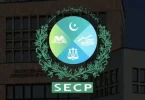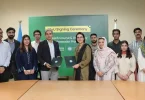Pakistan is pursuing a bold vision for a prosperous future, digital and otherwise, in line with the URAAN Pakistan initiative that aims to position the nation as a global player.
This involves rejuvenating the economy, promoting sustainable development, driving inclusive growth and establishing the country as a leading destination for foreign investment.
As part of the vision, Pakistan works to accelerate its digital transformation to enhance operational efficiency, promote innovation and improve its competitiveness on the global stage. With initiatives by the Ministry of Information Technology and Telecommunication (MoITT), startups are given access to funding and cloud credits to accelerate their adoption of emerging technologies and secure their presence globally.
The country is driving digital inclusion by extending information and communication technologies and telecommunication services to unserved and underserved areas. It is also building resilience by strengthening its disaster management infrastructure.
And the results of these multifaceted efforts are already showing. IT and IT-enabled services exports are expanding, reaching a record-high $3.8 billion in FY25. In January 2025, inflation in Pakistan witnessed a sharp drop to 2.4 per cent — the lowest in nine years. In addition, under its Digital Pakistan Policy, the country has been steadily improving its standing in global technology rankings, including reaching seventh place in the number of mobile users. With nearly 200 million telecom subscribers, approximately 150 million broadband users and mobile coverage across almost 80 per cent of its territory, Pakistan provides fertile ground for network modernisation.
Pakistan is now preparing to take a decisive leap into the next era of connectivity with the imminent rollout of 5G networks, a transformation that promises lasting benefits and will redefine how people live, work, and communicate. This move is expected to accelerate economic growth across all sectors — from finance, trade and commerce to mining and services — by enabling new use cases and business models that demand ultra-low latency and high bandwidth.
Read More: ZONG is Ready for 5G, a Collaboration with ZTE for Advanced 5G Network Planning and Design Training
According to a study conducted by Ericsson in collaboration with Analysys Mason across 15 emerging markets, including Pakistan, 5G is projected to contribute an additional $4.7 billion to the nation’s GDP, with a benefit-to-cost ratio of 2.8.
Beyond economic impact, the new spectrum will deliver wide-ranging societal benefits. It will enhance mobile experiences through superior video quality, lower latency, and higher speeds. It will also drive social inclusion by improving access to essential services, strengthen the sustainability of key sectors such as manufacturing and agriculture, and bolster the safety and resilience of critical infrastructure through reliable connectivity.
However, the success of 5G deployment hinges not only on the availability of new mid-band spectrum, but also on how it is allocated to communications service providers (CSPs). Since 5G technology is designed to operate with 100 MHz carriers in the mid-band, it is essential that this technical requirement is fully reflected in the spectrum assignment process and that spectrum is allocated in 100 MHz blocks per CSP. This approach enables the most cost-efficient 5G rollout, maximises utilisation of radio equipment, and delivers the highest network performance.
As the country prepares for the deployment of the new spectrum, it is crucial to have the right flavour of 5G — and that, in this case, is 5G standalone. Benefits of this type of network architecture include faster connection times and programmability for more agile creation of services and network slices. A 5G standalone network is also a prerequisite for 5G Internet of Things (IoT) use cases based on reduced capability (RedCap) technology. All these features make 5G standalone a profitable innovation platform.
To unlock the full revolutionary potential of 5G, standalone deployments are imperative. Moving decisively on standalone today will empower Pakistan to secure its position in the future economy.
5G is driven by enterprise and business demand, Enterprises investing in Pakistan will expect network solutions from trusted suppliers that support open, vendor-neutral stacks to guarantee transparency and multi-vendor interoperability. Ericsson is positioned to provide these open, secure 5G solutions.
With a legacy spanning more than 60 years in Pakistan, we have been at the forefront of transforming the country’s telecom sector and creating opportunities for greater inclusion across businesses and communities. We have played a key role in building the ICT infrastructure, revolutionising mobile connectivity and supporting the nation’s digital ambitions, and we are here for the long term.
By Kevin Murphy
The writer is president of Ericsson North Middle East







